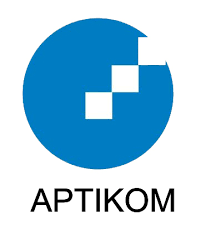Analysis of Cross Validation on Classification of Mangosteen Maturity Stages using Support Vector Machine
DOI:
https://doi.org/10.18196/eist.v5i1.22359Keywords:
feature extraction, image classification, mangosteen fruit, RGB color system, Support Vector MachineAbstract
This study explores the efficacy of the Support Vector Machine (SVM) method in classifying mangosteen fruit images based on six ripeness levels. Employing SVM enables nonlinear data classification and simultaneous utilization of multiple feature extractions, resulting in enhanced accuracy. Analysis reveals that models integrating three feature extractions outperform those with only two. With ample training data and optimized parameters, SVM achieves detection accuracy exceeding 90%. However, algorithmic enhancements are necessary to compute RGB color index values for all pixels on mangosteen skin surfaces, possibly through circular-shaped windows approximating the fruit's contour. Moreover, comparative assessments of RGB color system calculations against alternative systems such as HSI are crucial for selecting the most suitable color model in alignment with human perception.
References
A. Thammastitkul and T. Klayjumlang, “Mangosteen Quality Grading for Export Markets Using Digital Image Processing Techniques,” Int J Adv Sci Eng Inf Technol, vol. 11, no. 6, pp. 2452–2458, Dec. 2021, doi: 10.18517/IJASEIT.11.6.14003.
S. Riyadi et al., “Classification of Mangosteen Surface Quality Based on Image Processing Using Support Vector Machine,” International Journal of Integrated Engineering, vol. 13, no. 5, pp. 288–294, 2021, doi: 10.30880/IJIE.2021.13.05.029.
M. Furqan, M. Ikhsan, and A. Dalimunthe, “Detection of Ripeness of Manggosteen Fruit Using Hsv Color Space Transformation Method,” International Journal of Information System & Technology Akreditasi, vol. 5, no. 4, pp. 513–517, 2021.
I. Prabasari, “Comparison of destructive and non destructive method in maturity index of Garcia mangostana,” Planta Tropika: Journal of Agro Science, vol. 6, no. 2, 2018, doi: 10.18196/pt.2018.086.100-105.
H. Sabrol and K. Satish, “Tomato plant disease classification in digital images using classification tree,” International Conference on Communication and Signal Processing, ICCSP 2016, pp. 1242–1246, Nov. 2016, doi: 10.1109/ICCSP.2016.7754351.
S. Tamakuwala, J. Lavji, and R. Patel, “Quality Identification Of Tomato Using Image Processing Techniques,” 2018.
S. KUMARI Behera, A. Mahapatra, A. Rath, and P. kumar Sethy, “Classification & Grading of Tomatoes using Image Processing Techniques,” 2019. [Online]. Available: https://www.researchgate.net/publication/332653429
H. Naseera, R. Mahendran, G. Mary Amirtha Sagayee, and A. Santhakumaran, “Grading of Tomatoes into Different Classes Using Digital Image Processing”, Accessed: May 16, 2024. [Online]. Available: www.ijert.org
T. H. Trinh, X. T. Bui, T. H. Tran, H. H. C. Nguyen, and K. D. Ninh, “Mangosteen Fruit Detection Using Improved Faster R-CNN,” Lecture Notes on Data Engineering and Communications Technologies, vol. 148, pp. 366–375, 2022, doi: 10.1007/978-3-031-15063-0_35.
L. M. rifatul Azizah, S. F. Umayah, S. Riyadi, C. Damarjati, and N. A. Utama, “Deep learning implementation using convolutional neural network in mangosteen surface defect detection,” Proceedings - 7th IEEE International Conference on Control System, Computing and Engineering, ICCSCE 2017, vol. 2017-November, pp. 242–246, Jul. 2017, doi: 10.1109/ICCSCE.2017.8284412.
A. S. Agung, A. F. D. SR, M. S. Hersyam, A. B. Kaswar, and D. D. Andayani, “Classification Of Tomato Quality Based On Color Features And Skin Characteristics Using Image Processing Based Artificial Neural Network,” Jurnal Teknik Informatika (Jutif), vol. 4, no. 5, pp. 1021–1032, Oct. 2023, doi: 10.52436/1.JUTIF.2023.4.5.730.
“Classification of mangosteen fruit disease detection system based on existing convolutional neural network”, Accessed: May 16, 2024. [Online]. Available: https://www.researchgate.net/publication/364094660
S. Riyadi, A. M. A. Ratiwi, C. Damarjati, T. K. Hariadi, I. Prabasari, and N. A. Utama, “Classification of Mangosteen Surface Quality Using Principal Component Analysis,” Emerging Information Science and Technology, vol. 1, no. 1, 2020, doi: 10.18196/eist.115.
A. D. Prabandani, N. Yudistira, A. Raisa, and K. Nisa, “Large Scale Image Classification of Exotic Fruits in Indonesia Using Transfer Learning Method with MobileNet Model,” pp. 675–685, Apr. 2023, doi: 10.2991/978-94-6463-140-1_68.
J. Siswantoro, H. Arwoko, and M. Widiasri, “Indonesian fruits classification from image using MPEG-7 descriptors and ensemble of simple classifiers,” 2020, doi: 10.1111/jfpe.13414.



